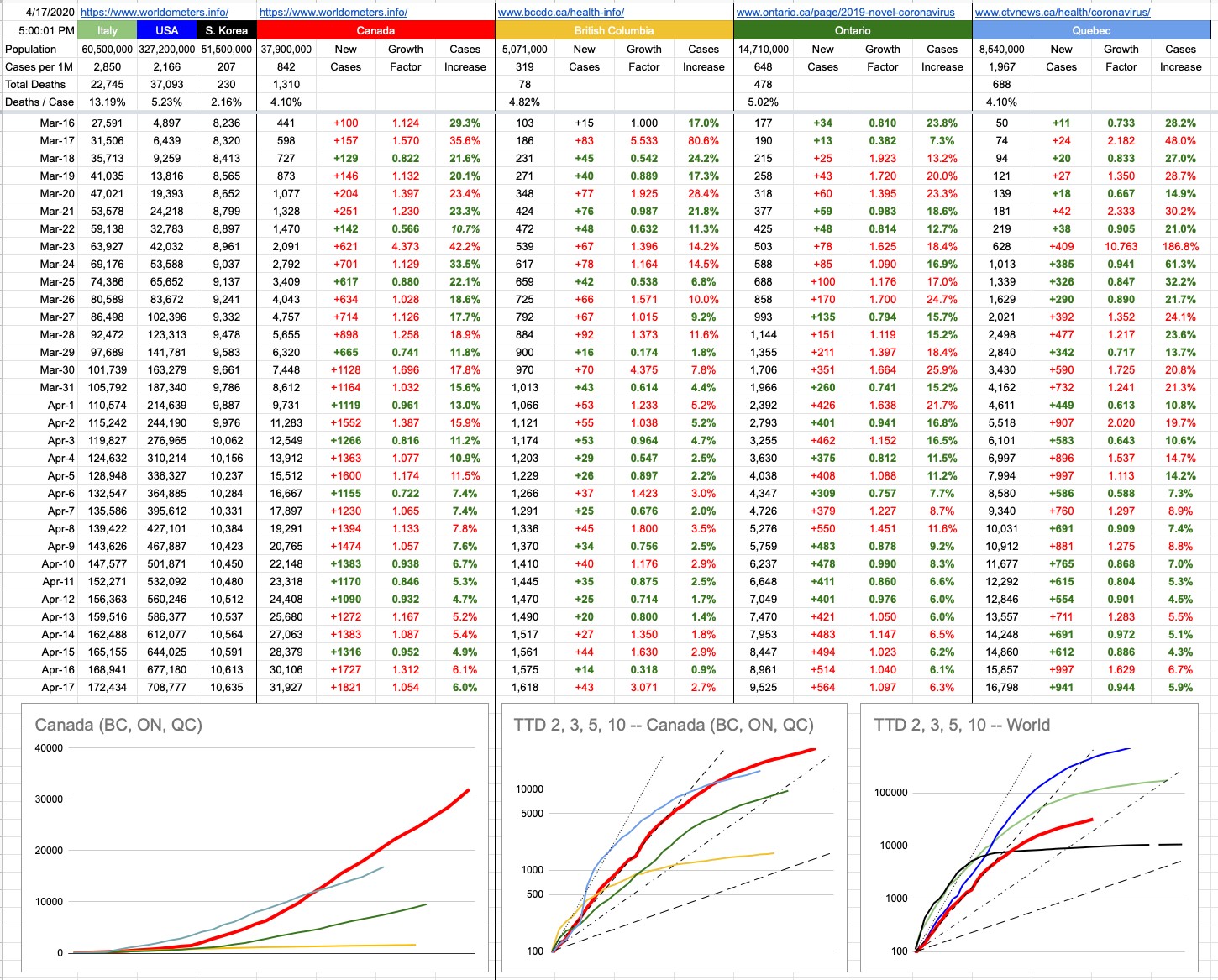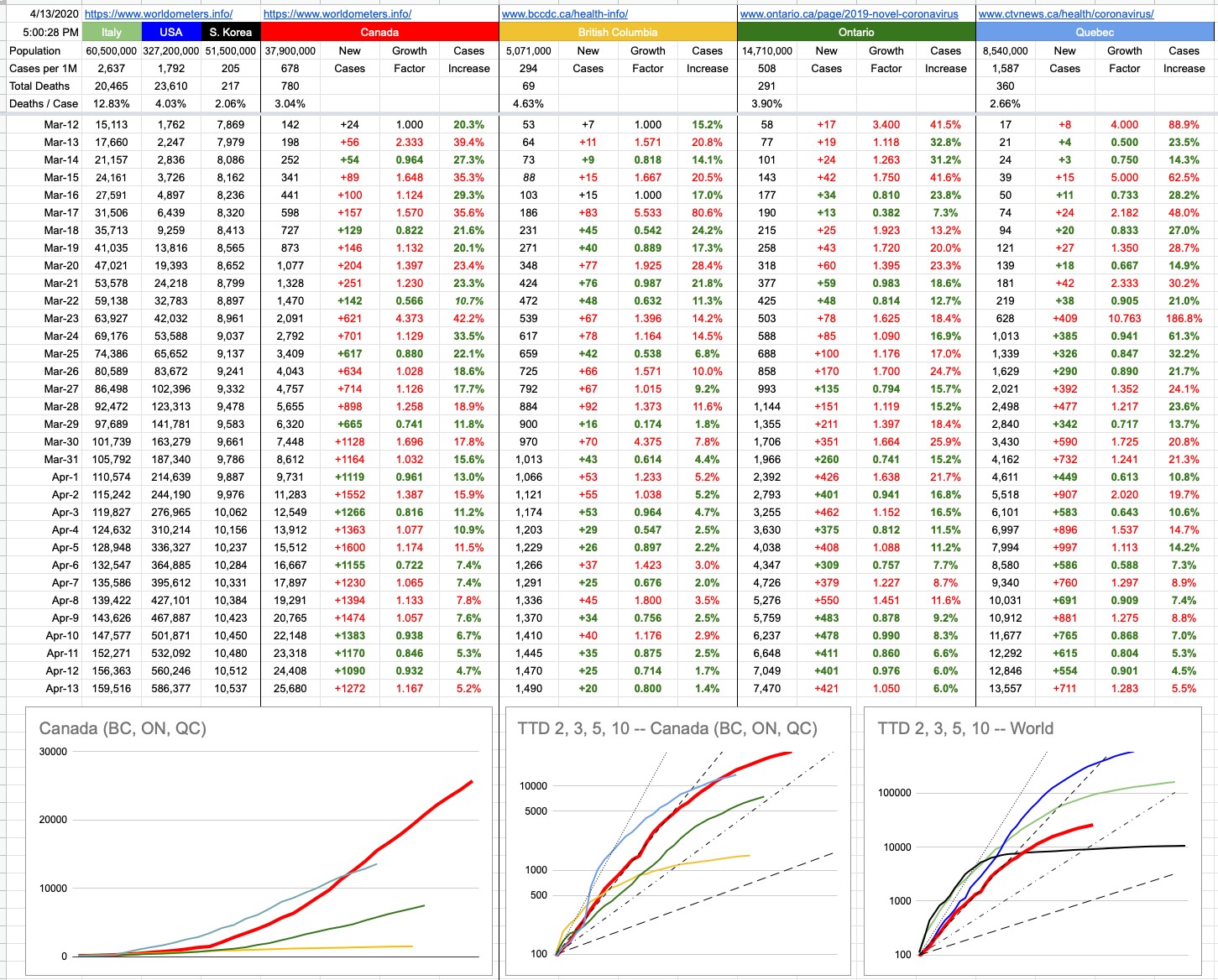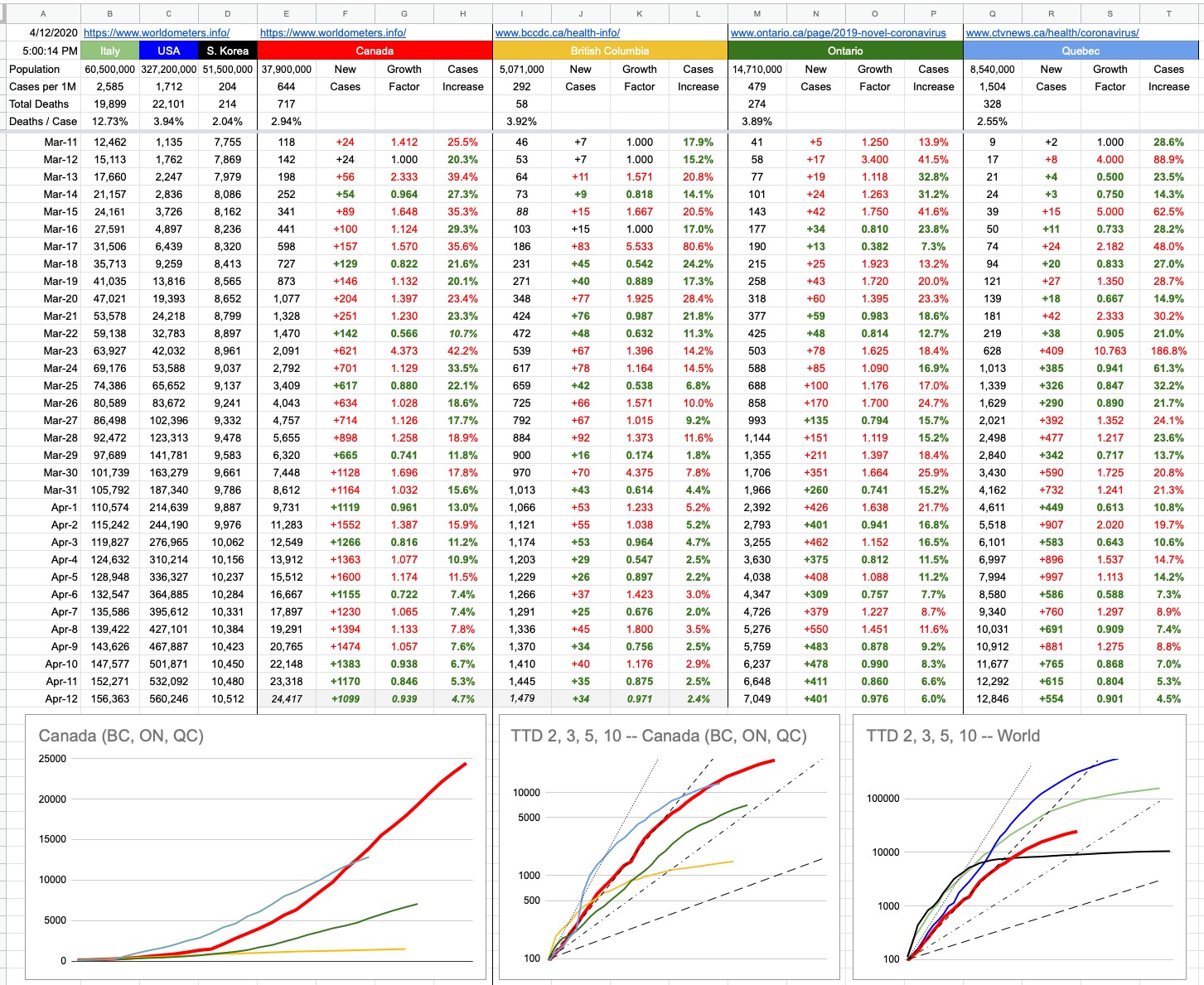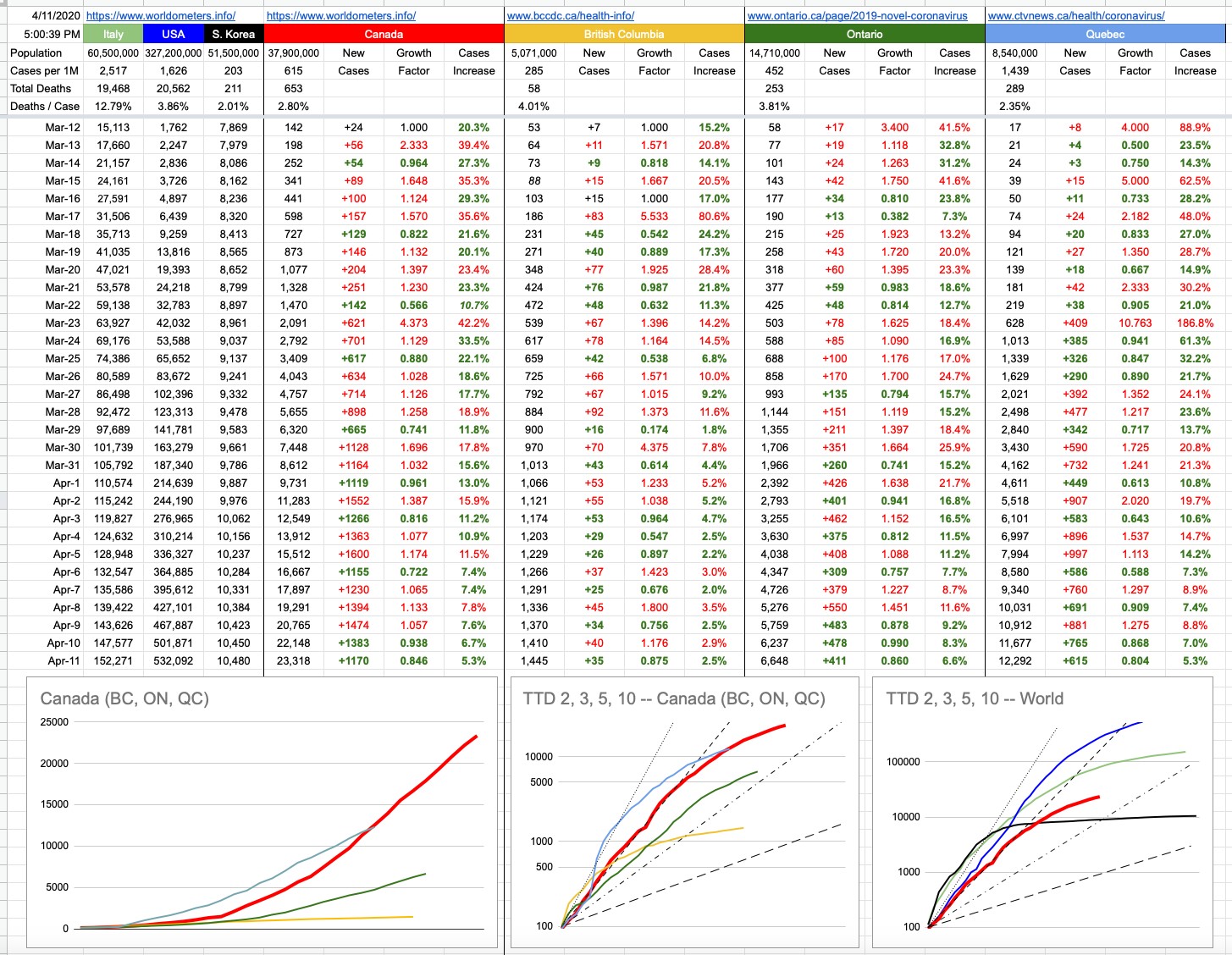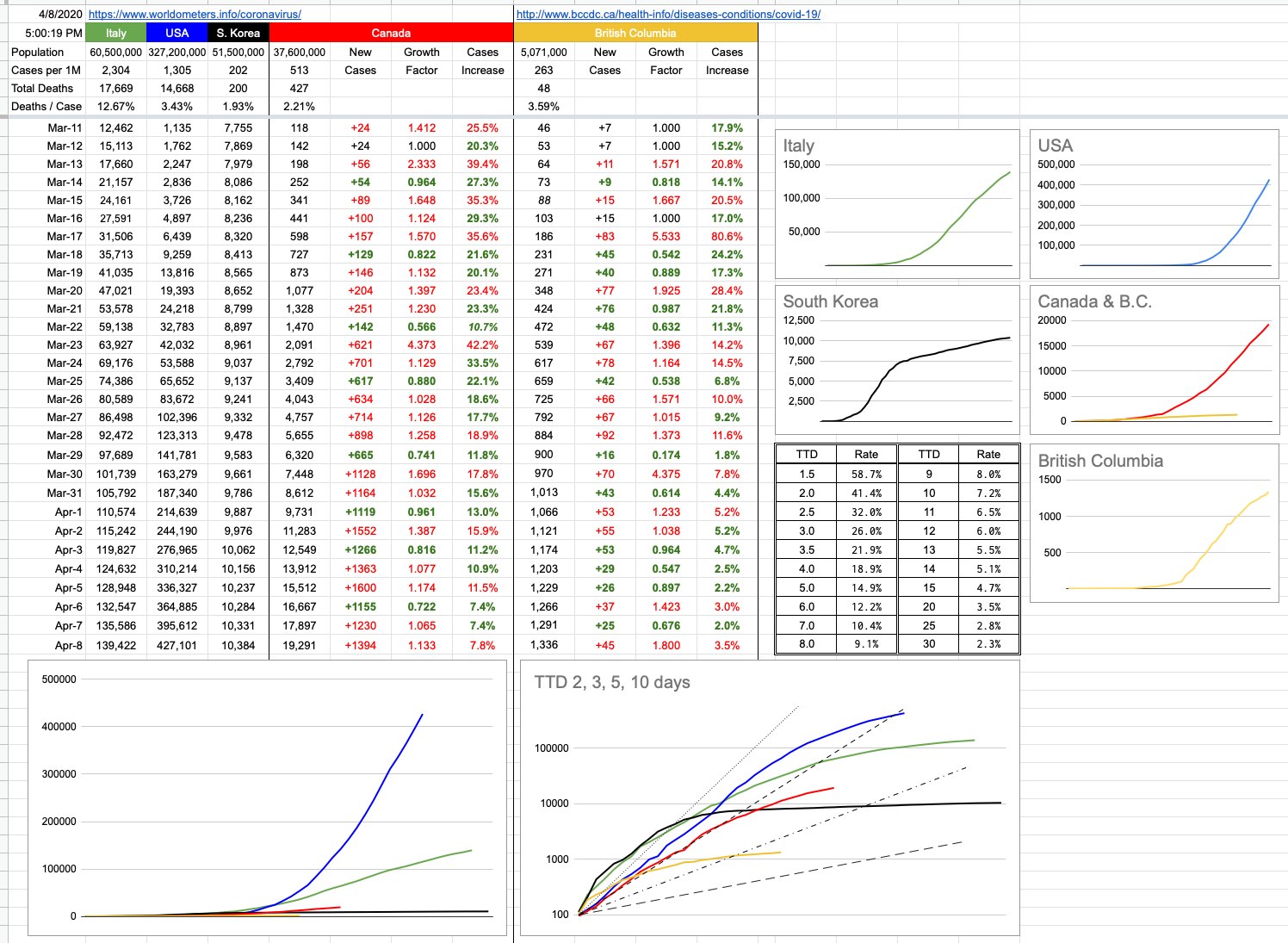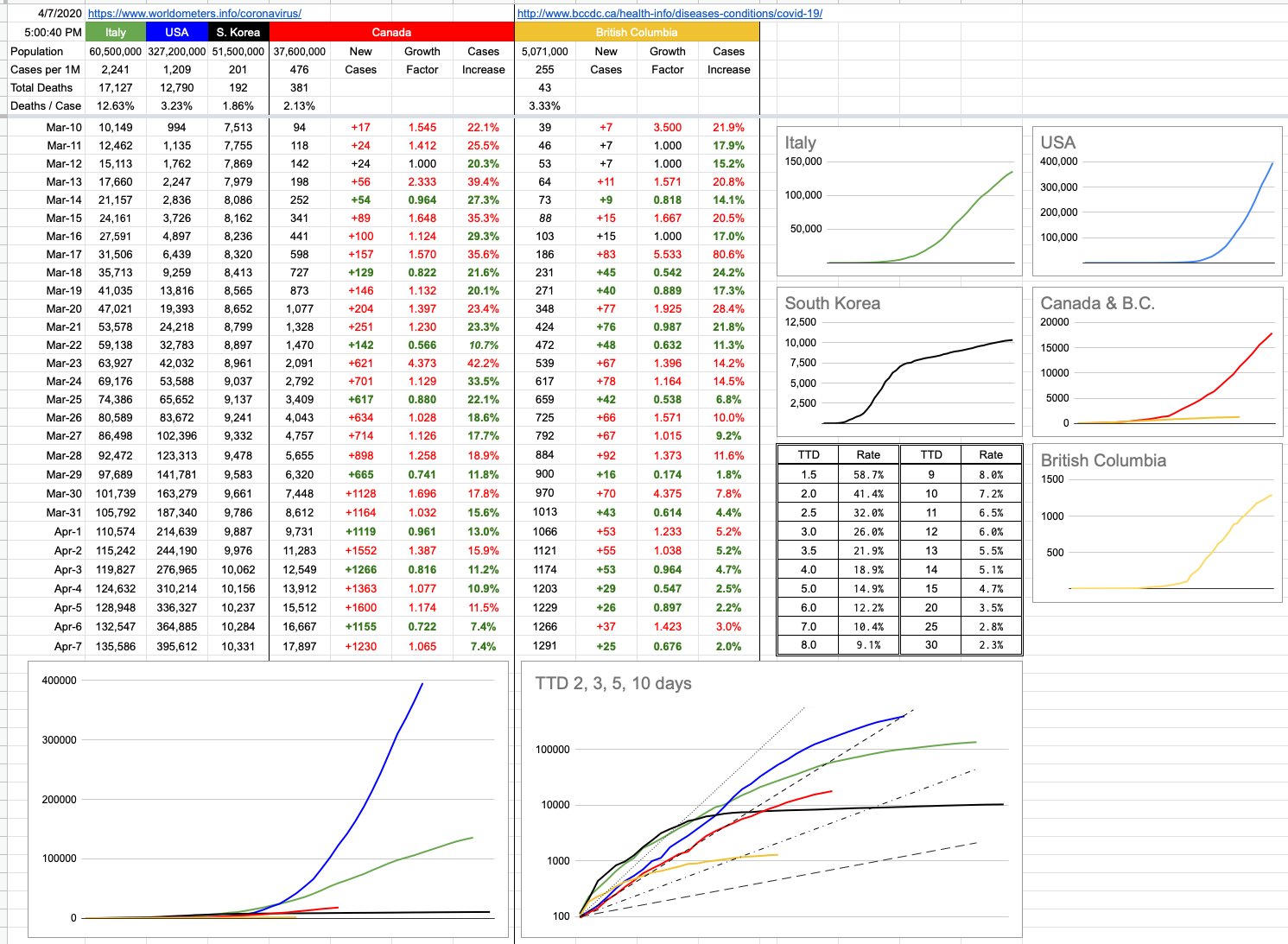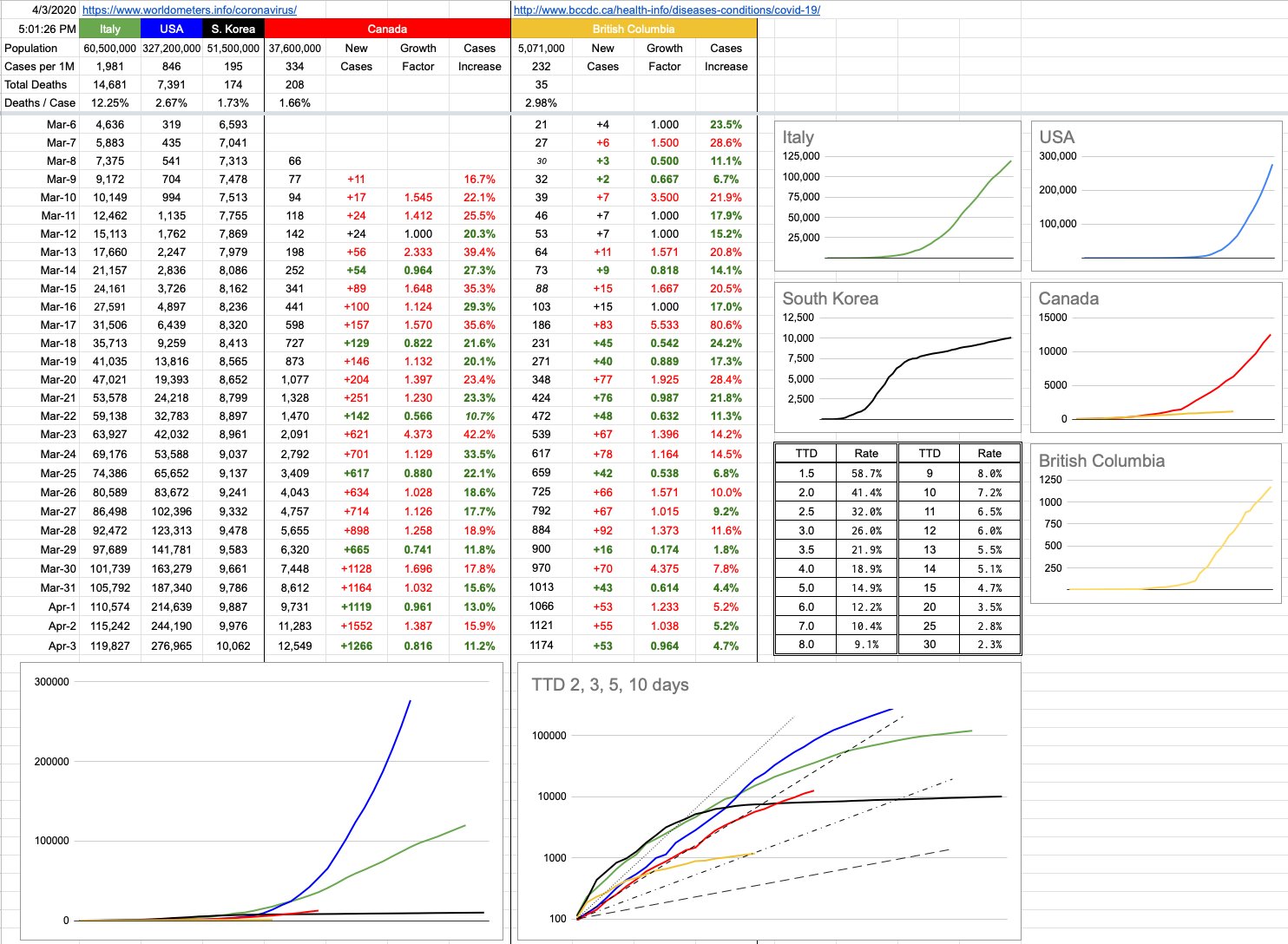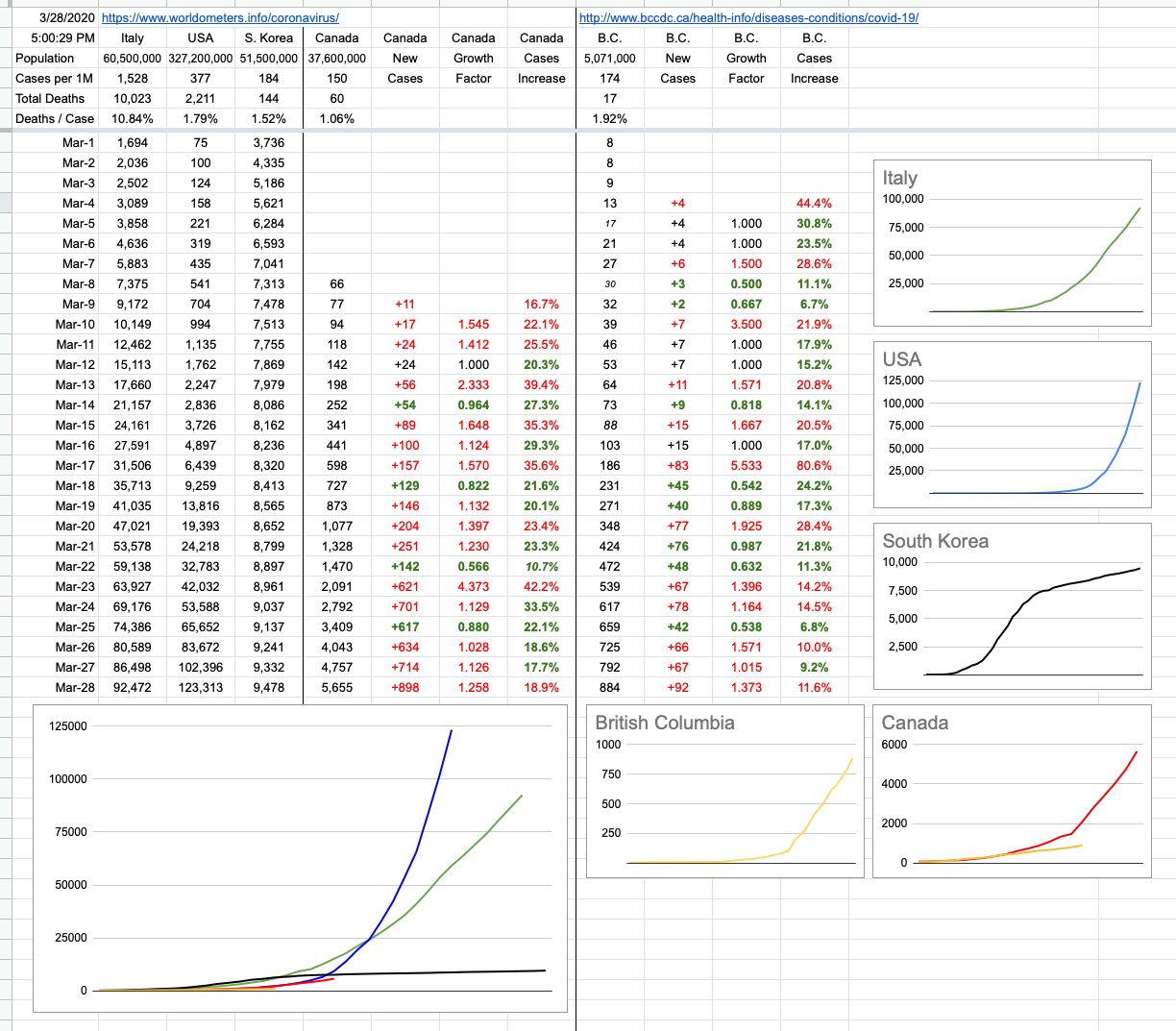Day 32 – April 17, 2020
Today marks one month since I posted my first little chart, with an accompanying short little paragraph explaining it. What’s the date today? March 58th? Seems that way.
Since then, everything has grown… the numbers have grown, the lines on the graphs have grown, and the volume of my little paragraph has as well. It seems to be dealing with a lot more than just numbers, doesn’t it… so… on that note…
Today’s update at 11am from Dr. Henry and Mr. Dix was a thorough presentation explaining where we’re at and where we’re going. The slides of that presentation are available on the BCCDC website, but I’ll give you the summary — we’re doing really well around here, well enough that we can stop comparing the Italy track… we’re not following it… and, looking at the numbers and charts below, haven’t been for a while. And recognizing that we may be seeing a plateau, on its way to a decline — cautious optimism — of many key numbers. New infections, hospitalizations, ICU cases… everything trending in the right direction. We are seeing lower numbers for new infections, even with enhanced testing. For now. We will see next week if the long weekend changed anything.
And it’s key to note that this success has largely been a result of the measures put in place, the timing of those measures, and our compliance with them. And now is not the time to stop. “It’s working” is a lot different than “It worked”. We are still a work in process, and those social/physical-distancing ways-of-life will be around for a while.
Capacity to handle patients is below 50%, and it’d be ideal to keep it there. The absolute certain end to this is a vaccine, and things will be different until then, but it doesn’t mean we’re stuck in our homes forever. The plan for opening things up with a methodical, well-thought-out strategy is in the works, but the last thing we want to do is open things up too quickly. That can drastically change things, and it can happen quickly. One interesting slide, #34, showed the results of dynamic modelling, testing different outcomes given the degree of compliance of social/physical distancing. Short answer — if we keep doing what we’re doing, very good. If we don’t, there are varying degrees of what would happen. Worst case scenario: we all take to the streets today…. In about 10 days, the near vertical growth in cases would quickly overrun our medical infrastructure. That model also implies that a little loosening wouldn’t have a drastically bad effect… but to what extent and how… again, as you can see on that slide, if you hit a tipping point, it’s hard to come back from it. And speaking of that scenario…
There was a story on CNN yesterday with a headline that read “The social-distancing deniers have arrived”. Before clicking on the story, I imagined the picture that’d accompany it… it would be a group of people protesting. I imagined bushy beards, hunting caps, guns, American flags, Trump signs and no masks. I was a little wrong about the masks… a couple of guys had them; the rest, bang on. Oh, and not just guns… assault rifles.
I have a great idea. Get Barack Obama, Joe Biden and Nancy Pelosi to hold a press conference. Throw Bernie in there too. And there, they announce in angry, loud, unified voices… that social distancing is a terrible idea. That this lockdown is ridiculous. “President Trump!”, they should demand, while dramatically ripping their masks off their faces, “End this nonsense! Open every business! Get everyone out on the streets! Now! We demand you open this country, fully… RIGHT NOW!”
It might actually work.
Democrats say Zig, Republicans say Zag. Republicans say Ding, Democrats say Dong. It doesn’t even matter what Zig/Zag or Ding/Dong mean… nobody knows. Nobody cares. We are right, they are wrong. You are with us or you are against us.
Around here, we’ve pretty-much forgotten who’s in power. Premier John Horgan (NDP, if you need reminding) is not around much. I may not agree with everything he has to say, but he and I have something in common; an understanding of what leads to success… a concept that has served me tremendously well all of my life: Surround yourself with excellent people, keep them around, and let them do their thing. Two of those people these days are, of course, Adrian Dix (NDP) and Dr. Bonnie Henry (who knows and who cares). Political affiliations are pretty irrelevant at the moment.
Actually, John Horgan hasn’t been completely M.I.A… he holds a press conference once a week or so and answers questions. There are other issues facing the province, and while I’m unclear what he does all day, some of it has to do with dealing with other provincial issues, and of course, there are many. They haven’t gone away. And some of it is planning how to open up this province (beyond private liquor store hours), hopefully sooner than later, in a way that works and isn’t at odds with the big picture being laid out by Adrian Dix and Dr. Henry. Indeed, he’s letting them run the most important issue of the day, and he’s staying out of the way. It’s working really well, something even the most ardent NDP bashers would grudgingly have to admit. There will be a time and place for partisan politics, and I look forward to it because it’ll mean that things are back to normal.
In fact, the closest thing to partisan politics we’ve had recently was about all of this… Liberal leader Andrew Wilkinson serving up a little softball… “Hey, John Horgan, where are you?” The premier probably could’ve swung at that and hit it over the fence, but he let it go by and watched it dribble to the backstop. Andrew Wilkinson’s question was actually a little more pointed… like, shouldn’t the premier of the province be out in front of the cameras, telling us what’s going on, giving us updates and hope and encouragement, like a real leader… etc. And the answer is simply… no… he shouldn’t. The British Columbian leadership and response to this pandemic has a face (two of them), and it doesn’t need a third.
But behind closed doors, I have no doubt that if one of those two gentlemen needed something from the other — personally, publicly, privately, politically… they’d be listening to each other and talking and working together. If there was ever a time for political partisanship to take a back seat, it’s now. Everyone… from the top on down, needs to be pulling in the same direction. We, around here, are very fortunate.
But just a little south of here… well, that pulling looks like this: it’s a tug-of-war… one side of the rope is 500 trillion little virus balls, all pulling together. The other side is a mixed bag of people… men, women… some are wearing red shirts, some are wearing blue shirts. Some are pulling in the right direction. Some are pretending to pull but are barely holding the rope. Some are pulling sideways. Others are pushing the rope into the ground. One guy is twisting the rope… clockwise… while someone else is twisting it the other way. A couple of people have little hacksaws and are quietly trying to cut the rope without anyone noticing.
It is so incredibly sad and frustrating to watch this slow but inevitable trainwreck. You can’t look away, and wish you could do something… because solutions to the dysfunction exist… but they seem to be well-beyond the reach of the very people tasked to manage it. It shouldn’t be this convoluted. The reasonable voices do exist, of course, but they are drowned out in a sea of irrational, national insanity.
View Original Post and All Comments on Facebook


